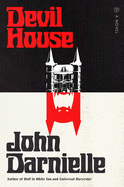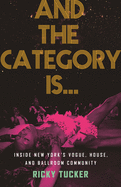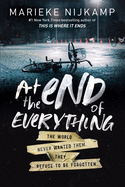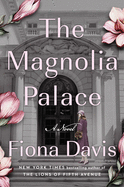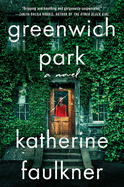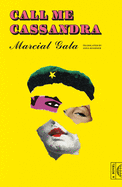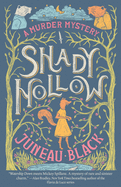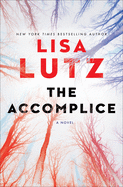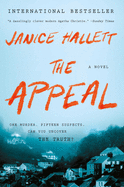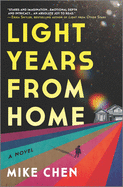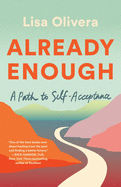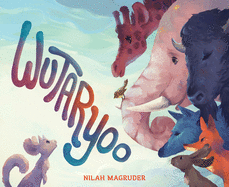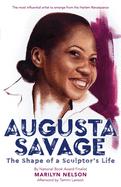Friday, January 28, 2022
Earlier this week, the American Library Association announced the 2022 Youth Media Awards, honoring the best books for children and young adults published in 2021.
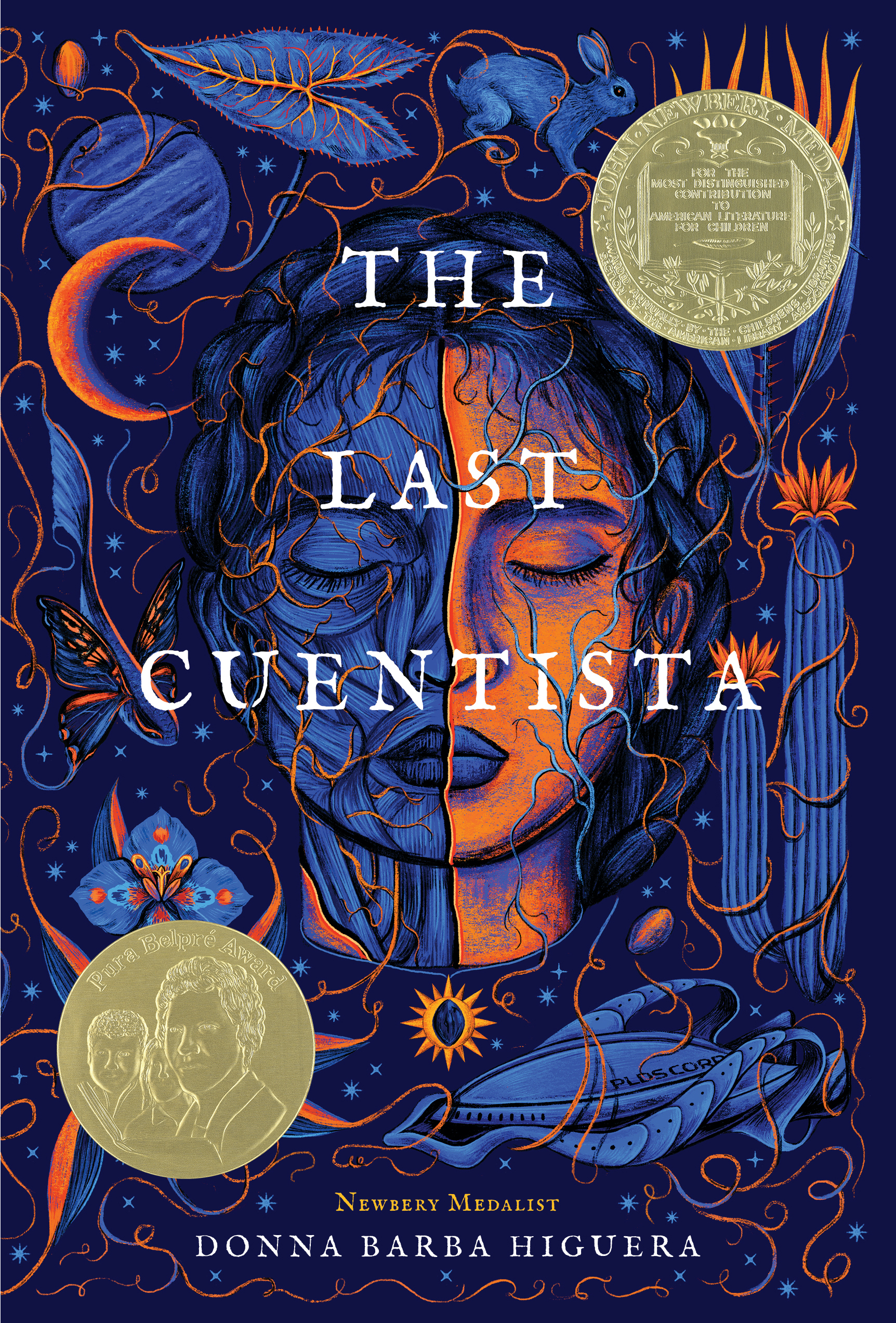 |
|
This year marks the celebration of the 100th anniversary of the John Newbery Medal, awarded to "the author of the most distinguished contribution to American literature for children." Donna Barba Higuera won for her novel The Last Cuentista (Levine Querido, $17.99), which also garnered the 2022 Pura Belpré Award, "presented annually to a Latino/Latina writer and illustrator whose work best portrays, affirms, and celebrates the Latino cultural experience in an outstanding work of literature for children and youth." 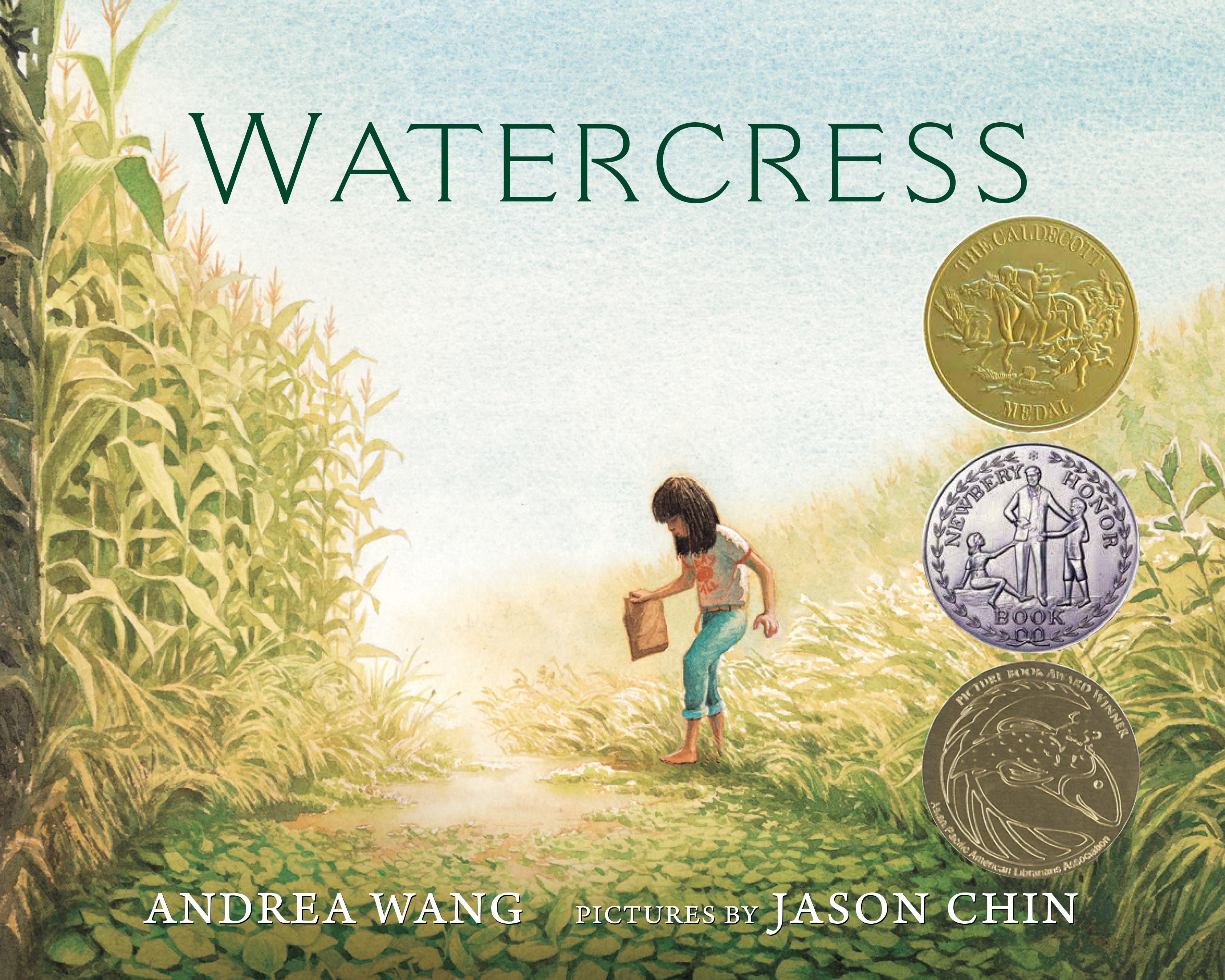 The Randolph Caldecott Medal, awarded "to the artist of the most distinguished American picture book for children," went to Jason Chin for his illustrations in Watercress (Neal Porter Books/Holiday House, $18.99), with text by Andrea Wang. Firekeeper's Daughter by Angeline Boulley (Holt, $18.99) won the Michael L. Printz Award for Excellence in Young Adult Literature; the novel also won the 2022 William C. Morris Award for a debut and was named a 2022 American Indian Youth Literature Award Honor Book.
The Randolph Caldecott Medal, awarded "to the artist of the most distinguished American picture book for children," went to Jason Chin for his illustrations in Watercress (Neal Porter Books/Holiday House, $18.99), with text by Andrea Wang. Firekeeper's Daughter by Angeline Boulley (Holt, $18.99) won the Michael L. Printz Award for Excellence in Young Adult Literature; the novel also won the 2022 William C. Morris Award for a debut and was named a 2022 American Indian Youth Literature Award Honor Book.
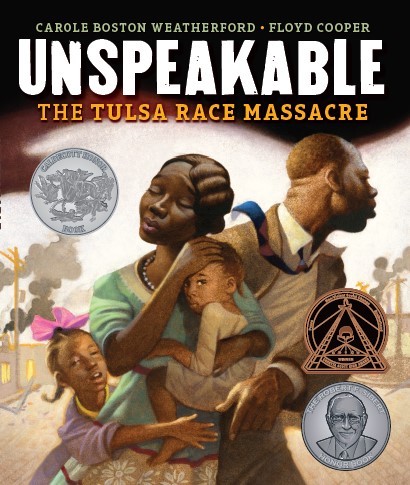 And for more wonderful children's/YA books, check out the Coretta Scott King Book Award winners, also presented on Monday. Nikki Grimes received the Virginia Hamilton Lifetime Achievement Award; the committee noted, "After more than 77 books, she has sealed her legacy by weaving poetry and novels in verse into an impressive body of work." Unspeakable: The Tulsa Race Massacre by Carole Boston Weatherford, illustrated by Floyd Cooper (Carolrhoda Books, $17.99) won both the CSK Author Award and CSK Illustrator Award; the Coretta Scott King/John Steptoe Award for New Talent went to Amber McBride for Me (Moth) (Feiwel and Friends, $18.99) and to Regis and Kahran Bethencourt for their photography in The Me I Choose to Be (Little, Brown, $17.99). --Siân Gaetano, children's/YA editor, Shelf Awareness
And for more wonderful children's/YA books, check out the Coretta Scott King Book Award winners, also presented on Monday. Nikki Grimes received the Virginia Hamilton Lifetime Achievement Award; the committee noted, "After more than 77 books, she has sealed her legacy by weaving poetry and novels in verse into an impressive body of work." Unspeakable: The Tulsa Race Massacre by Carole Boston Weatherford, illustrated by Floyd Cooper (Carolrhoda Books, $17.99) won both the CSK Author Award and CSK Illustrator Award; the Coretta Scott King/John Steptoe Award for New Talent went to Amber McBride for Me (Moth) (Feiwel and Friends, $18.99) and to Regis and Kahran Bethencourt for their photography in The Me I Choose to Be (Little, Brown, $17.99). --Siân Gaetano, children's/YA editor, Shelf Awareness
The Magnolia Palace
by Fiona Davis
Fiona Davis (The Chelsea Girls) delivers another richly detailed, engaging historical narrative in her sixth novel, The Magnolia Palace. As she did with The Masterpiece and The Lions of Fifth Avenue, Davis draws inspiration from a New York City icon: in this case, the Frick Collection on East 70th Street and the way it shapes the destinies of three very different women.
In 1919, artists' model Lillian Carter needs a new career. She harbors dreams of Hollywood but stumbles into a position as private secretary to Helen Clay Frick, the intelligent but capricious spinster daughter of steel magnate Henry Clay Frick. Though Lillian plans to earn the money for her train ticket and then leave, she finds herself drawn into the Fricks' world--but she knows, deep down, that all her newfound skills won't matter if anyone finds out about her past.
Veronica Weber, a struggling English model, finds herself stranded at the Frick in a 1961 snowstorm after a photo shoot. Accompanied by a young Black archivist, Veronica uncovers a mystery: a set of letters comprising a scavenger hunt that may tie her to both Helen and Lillian. Davis expertly weaves together Lillian's and Veronica's narratives, teaching readers about the Manhattan art world and bringing the Frick's many hidden corners to life. The hunt for a mysterious treasure is entertaining, but the real gem of the narrative is the way that all three women, especially Lillian, overcome past obstacles to create new lives for themselves. --Katie Noah Gibson, blogger at Cakes, Tea and Dreams
Discover: Fiona Davis brings New York City's Frick Collection and the women who shaped it to life in her engaging sixth novel.
Devil House
by John Darnielle
Devil House is a thrillingly experimental novel from John Darnielle, the lead singer of the Mountain Goats and author of the equally surprising Universal Harvester and Wolf in White Van. Darnielle's protagonist, Gage Chandler, is a true-crime writer looking for the subject of his next book. Hoping for inspiration, Chandler moves into a house where an infamous crime took place and begins his immersive method of investigation. Chandler's occupation allows Darnielle to reflect on the morality and limitations of storytelling, approaching true crime with equal parts fascination and criticism. It also allows Darnielle to push the limits of novelistic structure, as his narrative occasionally slips away from Chandler for lengthy passages that explore the sensational cases that Chandler has rendered into profitable books.
Devil House's slippery narrative is full of the unexpected. While the crimes the book explores have a certain lurid appeal--the case connected to the titular house features a porn store, the Satanic Panic of the 1980s and a gruesome pair of murders committed with a sword--the narratives linger much more on the people involved, on the mundane joys and miseries that drove them. Unsurprisingly, these sensitive portraits are a long way from the legends formed in the decades afterward, revealing the way multifaceted tragedies are reshaped into more convenient narratives. As Devil House nimbly moves between Chandler's investigation and the lives of his subjects, Darnielle weaves together an empathetic meditation on the people who live beneath the notice of society--and narrative--until tragedy strikes. --Hank Stephenson, the Sun magazine, manuscript reader
Discover: Devil House is an unpredictable novel that serves as a fascinating meditation on the harm stories can do.
Greenwich Park
by Katherine Faulkner
Family, friendship, deception and doubt permeate Greenwich Park, British journalist Katherine Faulkner's debut novel. The suspense is heightened by the risk to three pregnant women and their babies, linked by family as well as secrets.
The mystery begins with an "Afterward" section on page one of Faulkner's story, an unsigned letter to Helen from Her Majesty's Prison that says "I hope you know I never meant for things to end the way they did." The plot then unfolds from Helen's first pre-natal class. Twenty-four weeks pregnant, she's on maternity leave, bored and drawn to overly friendly Rachel, in spite of her painted, chewed nails, her too-dyed hair and her "wolfish" smile. Ignoring a sense of foreboding, demure Helen accepts Rachel's "coincidental" insinuations into her days, as Helen's husband is distracted by work, and her brother and sister-in-law, Serena, who is also expecting, become oddly blasé toward her.
Alternating first-person narratives from Helen, Serena and their family friend Katie, a journalist, abound with foreshadowing and clues, in a complex story that invites speculation: Who became the prisoner, and what was the crime? Brief descriptions of rushed trysts between unidentified lovers in the leafy recesses of Greenwich Park and recurring reflections on an event a decade earlier add intrigue.
Faulkner's psychological thriller is precise and tight, as unreliable narrators present suspicious twists. One credible voice and a comforting summary slowly ease the meticulously crafted suspense of this chilling, fast-paced tale. --Cheryl McKeon, Book House of Stuyvesant Plaza, Albany, N.Y.
Discover: A fast-paced British thriller speculates on a crime involving a pregnant woman, her family and a suspicious interloper.
Call Me Cassandra
by Marcial Gala, transl. by Anna Kushner
Greek mythology's princess Cassandra was given the power of prophecy, but when she refused the advances of the god Apollo, she was cursed forever with disbelief. Millennia later, a slight, blond 10-year-old in Cienfuegos, Cuba, insists, "I don't want to be this Raúl, I want to be Cassandra." And yet in the first few pages of Cuban novelist Marcial Gala's provocative Call Me Cassandra, Raúl reveals his immutable fate, to become a "little pretend soldier in Angola" and die at just 19.
Truth from others eludes Raúl throughout his short existence, with a philandering father, a belligerent older brother and a mother disconnected from reality. For young Raúl, his life and body are hardly his own--but knowing he is Cassandra reincarnate is absolute. Bullied by father, brother and schoolmates for not embodying the gender assigned at birth, Cassandra escapes to a faraway, long-ago Troy--whether imaginary or real is irrelevant--to be nurtured by memories, advised by mythic voices. As a soldier at 18, she's sent across the world as part of the 1975 Cuban intervention supporting the communist People's Movement for the Liberation of Angola. Her fate--and everyone else's--is already determined: Cassandra's future holds no kindness.
Translated by Cuban American Anna Kushner, Gala's second English-language novel (after The Black Cathedral) is no easy read: the violence here is vivid and gut-churning throughout. Knowing the outcome from the beginning offers little solace. Nevertheless, Gala is an inventive, enticing storyteller, moving fluidly between past and present--and beyond--effortlessly traversing Greek temples and palaces, Cienfuegos's nightclubs and Angolan battlefields to deliver a brilliantly subversive coming-of-age triumph. --Terry Hong, Smithsonian BookDragon
Discover: Cuban author Marcial Gala's second novel translated into English is a fascinating examination of fluid identity set against cultural expectations.
Mystery & Thriller
Shady Hollow
by Juneau Black
Previously published in 2015 by Hammer & Birch, Shady Hollow is the first in a series of cozy mysteries starring sweet, lovable animal characters. Juneau Black (pen name of a two-author team) will please lovers of both woodland creatures and whodunits with this gentle, plot-twisting exploration of small-town life.
The community of Shady Hollow is home to a typical cast of amiable eccentrics, including a gossip-hungry hummingbird; a good-natured, coffee-slinging moose; a timid mouse accountant; and a family of upper-crusty beavers. When a cantankerous toad turns up dead in the mill pond, however, the town's policebears turn out to be underprepared to investigate, and it falls to local reporter Vera Vixen to uncover the murderer. Vera the fox is "an old-school journalist, despite her youth," and though new to town, her friendship with Lenore Lee (a wise raven well-read in murder and, naturally, owner of Nevermore Books) provides a solid base for her inquiries. The more she learns about the inhabitants of Shady Hollow, however, the more complicated the case becomes, and Vera herself may be in danger.
With its charming and affable characters, Shady Hollow nonetheless serves up plenty of intrigue and danger, ending with teasing hints of what's to come in the next installment (Cold Clay is slated for March 2022). The nonhuman cast offers an extra note of humor: accused of cynicism, Lenore responds, "I'm a raven.... If you want sunshine and melodies, go find a swallow." This captivating tale offers sunshine and murder in perfect proportion to keep readers entertained and engrossed in deceptively placid Shady Hollow. --Julia Kastner, librarian, teacher and blogger at pagesofjulia
Discover: This whimsical cozy mystery set in a town of animal characters will tickle and amuse alongside its whodunit plot.
The Accomplice
by Lisa Lutz
When Owen meets Luna in a college seminar in 2002, he notes she "appeared normal... and even a bit square," but he also sees "a feral quality in her" and "a girl roiling with secrets." He's instantly drawn in, the same way readers will be by Lisa Lutz's engrossing The Accomplice.
Owen is a privileged rich boy while Luna is a girl with limited means from a broken home. Nonetheless, the two become inseparable as friends but never lovers. They share confidences they tell no one else, especially after a suspicious death occurs within their social circle. Seventeen years later, the two are still best friends, married to other people but living close by. One day, Luna finds Owen's wife shot to death, and the ensuing investigation threatens to uncover everything they've long kept hidden. Is it merely a coincidence that death follows them, or is something sinister going on?
Luna is another welcome addition to the gallery of protagonists that's become Lutz's signature (The Last Word; The Passenger): women who don't aspire to please anyone but are riveting precisely for this reason. Luna can be blunt and not overly social, but she's also the loyal friend one can always count on in an emergency. In understated prose, Lutz nails her precise and concise observations: "Vera, already deeply intoxicated, wobbled on her one-inch heels" and "Luna returned her gaze to the ceiling, because the ceiling didn't judge her." The Accomplice, with chapters alternating between past and present, takes its time revealing its secrets but, like Luna, it leaves an indelible impression. --Elyse Dinh-McCrillis, reviewer and freelance editor at The Edit Ninja
Discover: In this entrancing mystery, two best friends are entangled in the investigation of a mysterious death, 17 years after another death occurred during their college years together.
The Appeal
by Janice Hallett
The Appeal by Janice Hallett is an epistolary mystery consisting of e-mails and texts, police reports and other written documents, all pertaining to a court case involving a murder. There's every conceivable chance that readers will have a jolly good time sorting through the documents, which are by turns enthralling, catty, contradictory and witheringly funny.
The Appeal centers on the Fairway Players, an amateur theater company in Lockwood, England. The troupe is working on Arthur Miller's All My Sons when chair Martin Hayward e-mails company members to say that his two-year-old granddaughter has been diagnosed with a rare form of brain cancer. After Martin reports that a potentially lifesaving American drug is available, though unaffordable, cast and crew throw themselves into fundraising efforts. When someone outside the Fairway community e-mails the campaign coordinator about making an anonymous donation, it's cause for joy--and then suspicion.
In order to keep all the characters straight, readers will have to consult the lengthy list of individuals associated with the acting company repeatedly, but it's a meager price to pay to follow Hallett's first novel, which is consuming and almost unreasonably clever. As in a typical mystery, The Appeal has its share of liars, but Hallett's novel includes an added layer of obfuscation: readers can be no more certain who's behind the name on an e-mail or text than they can be certain who's behind the name on a book review. --Nell Beram, author and freelance writer
Discover: This spellbinding epistolary mystery, told almost entirely in e-mails and texts, centers on an English amateur theater troupe, some of whose members are secretly playing roles in their offstage lives.
Science Fiction & Fantasy
Light Years from Home
by Mike Chen
In Light Years from Home, Mike Chen (Here and Now and Then) once again delivers a moving story of fractured familial relationships against the backdrop of a science fiction adventure.
On the run from a voracious alien race called the Awakened, Jakob Shao flees to "one obvious, hilarious, completely impossible choice. Earth." There he'll face a force even more terrifying than the Awakened: his family.
After Jakob's disappearance 15 years ago and their father's death while searching for him, his sisters Evie and Kass followed divergent paths. Evie, who always believed their father's story that aliens took Jakob, left college to chase evidence of extraterrestrials. Kass always believed her irresponsible twin brother ran away; she now has a steady career and looks after their mother, who has early-onset dementia. When Jakob reappears out of nowhere, Evie believes his story about an intergalactic war, though Kass thinks he's mentally ill. Soon, the FBI is looking for him. Caught between blood ties and unhealed inner wounds, the Shao siblings have to find a way to make peace if they're going to save their family, let alone the universe.
Chen gently unfolds every fissure in the Shao family and, in particular, its effects on Kass and Evie. The idea that an intergalactic war cannot seem to alter sibling dynamics feels true here, and readers will root for the Shaos to find the reconciliation they need to move forward. Fans of light sci-fi and emotional journeys should enjoy this touching family drama spiked with a hint of space opera. --Jaclyn Fulwood, blogger at Infinite Reads
Discover: This combination of a cosmic adventure and the story of strained sibling ties packs high-stakes action and terrific emotional range into one dynamic novel.
Social Science
And the Category Is... Inside New York's Vogue, House and Ballroom Community
by Ricky Tucker
Fans of TV's Pose will devour Ricky Tucker's illuminating exploration of the history of the New York ballroom community. Ballroom, ball culture and house-vogue is a culture founded more than a century ago by LGBTQ+ African American and Latinx people in Harlem, where they found and continue to find acceptance and families of choice.
Tucker names each chapter after a dancefloor category ("Vogue," "Realness," "Body," etc.). The first chapter ("Werk") gives a fascinating history of ballroom culture's representation in media, including Jennie Livingston's 1990 breakout documentary Paris Is Burning, the release of Madonna's "Vogue" and the line between appreciation and appropriation. "This pivotal moment in her career wouldn't be the first or last time Madonna shook one hand with Black culture only to pickpocket with the other," writes Tucker. What makes this book really shine is Tucker's skillful combination of personal, wry autobiography, interviews with pioneers and legends in the ballroom community, and scholarly research.
One chapter spotlights hidden figures in the origin of ballroom during the Harlem Renaissance--including Langston Hughes's complicated feelings about witnessing an annual drag ball in the 1920s. "He vacillates between awe and disdain, or rather, shade so shady you'd think he was the emcee of said ball as opposed to an innocent bystander," writes Tucker. Other topics include queer youth, trans lives, gender norms and resolving body trauma.
And the Category Is... is a valuable book highlighting the long-hidden history of the Black and Latinx LGBTQ+ communities that created ballroom culture. It's an entertaining and inspiring history lesson. --Kevin Howell, independent reviewer and marketing consultant
Discover: "Tens! Tens across the board" for Ricky Turner's fascinating deep dive into New York City's century-old ballroom culture.
Psychology & Self-Help
Already Enough: A Path to Self-Acceptance
by Lisa Olivera
Stories shape and drive all human existence. And in Already Enough, an optimistic, mindfully aware self-help book by therapist Lisa Olivera, readers will be encouraged to reflect upon and rethink defining moments in their own lives.
As a newborn in 1987, Olivera was abandoned in Muir Woods in Northern California. Though she was raised by loving adoptive parents, Olivera experienced deep-rooted feelings of desertion and inadequacy that were masked in perfectionism. Olivera went into therapy after a suicide attempt at age 14. Mining the past with a trusted confidante helped her to recognize how the story of her life affected her identity and her relationships with herself and others.
Sometimes "the stories we tell ourselves about ourselves are wrong," says Olivera. In her first book, she offers interactive tools and strategies that aim to help others to reframe their own stories more positively in order to excavate their innate strengths and beliefs. Three distinct sections offer guidance: "Getting Honest" shows how important it is to identify and understand the stories woven into someone's life. "Getting Brave" explains how to confront those stories in order to transcend that which holds a person back. And "Getting Free" details how self-actualization can unlock the door to healing and living new stories.
Olivera is wildly popular on Instagram, where she has more than 450,000 followers--and it's no wonder. By splicing her own professional and personal experiences into the narrative, Olivera offers a gentle, positive message with practical, hopeful ways to boost self-worth. --Kathleen Gerard, blogger at Reading Between the Lines
Discover: An insightful, compassionate therapist offers practical, positive advice and self-help strategies for reframing painful life stories.
Children's & Young Adult
At the End of Everything
by Marieke Nijkamp
At the End of Everything is a stomach-churning thriller that delivers prudent social commentary on the complicated reality of being a teen with mental health issues and what it means to survive when no one cares if you live.
The Hope Juvenile Treatment Center in the Ozarks of Arkansas is a residential rehab facility that provides counseling and therapy to "emotionally troubled youth." But instead of rehabilitating teens, Hope tells them, "Don't speak up. Don't talk back. Don't question too much." When the guards stop showing up for work, the Hope residents realize something must be terribly wrong. A group of them decide to make a run for it, only to be confronted by soldiers who tell them about the deadly, highly contagious respiratory disease that is ravaging the country. Without permits to leave their residence, the teens are forced back to the only place they know. With food supplies quickly running out and the "plague" knocking at their door, the "outcasts and rejects" of Hope must figure out how to persevere in face of the disease.
Marieke Nijkamp (Before I Let Go; This Is Where It Ends) fittingly uses an apocalyptic thriller to shine a light on how members of society treat people they don't fully understand. The three teens at the center of Nijkamp's gripping novel are Grace, whose anger has landed her in solitary nine times this year; nonverbal Logan, whose twin sister is one of the first residents to fall ill; and Emerson, a nonbinary person grappling with their faith. The fear factor is heightened already by the unprecedented situation, but it's how these kids are viewed by the world that is most terrifying. A chilling yet necessary commentary. --Lana Barnes, freelance reviewer and proofreader
Discover: A group of disenfranchised teens in a residential treatment center are left to fend for themselves when a deadly plague spreads across the country in this chilling thriller.
Wutaryoo
by Nilah Magruder
Our origin stories do not always come wrapped up in neat packages. But as one distinct creature learns in this moving picture book, every one of us is worthy of a story, even if we have to write it ourselves.
Little Wutaryoo has a long, fluffy tail, big ears and little horns. She is the only one of her kind, and doesn't know her name. When others ask "Wutaryoo?" she doesn't know the answer and asks the question back. In this way, she learns her friends' origin stories. Wutaryoo worries that she has no story of her own. "What am I?" she asks herself. "Who are my people? Where did I come from?" Surely, she thinks, she has a story, too. And so Wutaryoo sets out on an epic geographic and personal quest to find herself. When she comes to what she believes must be the beginning of the world, she thinks, "My story must be over that last hill." A story does wait beyond the hill, but it's not what she expects.
Nilah Magruder (How to Find a Fox; M.F.K.) approaches the idea of being a "cultural orphan" from the perspective of a Black American whose family was brought in violence to North America so long ago that they no longer have ties to Africa. Although there are no indications that Wutaryoo has a similarly brutal history, she does share the experience of not knowing where she fits into her own landscape. Magruder's digital illustrations are replete with cool purples, blues and grays. The sense of space is broad and deep, with natural features and friendly characters populating foreground and background. Wutaryoo shows readers that identity is shaped not only by where we come from but by who we are right now. --Emilie Coulter, freelance writer and editor
Discover: In a soul-stirring and accessible picture book about identity, a one-of-a-kind creature learns that it's okay to create one's own origin story.
Augusta Savage: The Shape of a Sculptor's Life
by Marilyn Nelson
Marilyn Nelson skillfully uses poetry to form the image of Harlem Renaissance sculptor Augusta Savage (1892-1962) in this distinctive and thought-provoking YA biography.
Savage, the seventh of 14 children, faced opposition to her art from her father. Nelson hauntingly illustrates the unstoppable fortitude that art ignited in Savage despite this opposition, even at a young age: "Her father's/ fear of his God drove him to search for her/ secret hiding places, to cut switches,/ to beat the living daylights of art's sin/ out of her, a man beating back wildfire." As Savage pursued her passion, she married a supportive partner with a wonderfully suitable name she would keep even after their marriage ended. And Savage managed to forge a career out of the very skill her father attempted to smother. Nelson takes her readers through Savage's commission to sculpt W.E.B. Du Bois, her role in the Harlem Renaissance and the devastation of losing a scholarship to study in France because of her race. Yet no matter the roadblock, Savage powered on.
Nelson's (How I Discovered Poetry) striking verse gives powerful voice to the highs and lows the artist experienced, and the accompanying photographs of Savage's sculptures are awe-inducing. Nelson periodically uses concrete poems to mirror Savage's art, such as the harp shape for the poem "The Harp," which conveys the story of Savage's commission to create a sculpture for the 1939-1940 New York World's Fair. This astute portrait of Savage, who overcame many obstacles to pursue her calling, celebrates the talent, tenacity and benevolence that shaped her character and changed the world of art. --Jen Forbus, freelancer
Discover: Marilyn Nelson's collection of poems vividly tells the inspiring story of Augusta Savage, a groundbreaking Harlem Renaissance sculptor.
I Am Golden
by Eva Chen, illus. by Sophie Diao
An Instagram executive and Google Doodler might not seem to be a literary match, but author Eva Chen (Juno Valentine series) and illustrator Sophie Diao (I Am the Wind) prove to be an ideal pairing in their fabulous first picture book collaboration, I Am Golden. "We named you Mei," adoring parents explain to the infant in their arms, "Not May like the month. Měi, which means beautiful. Like the country we live in now--Měi Guó, America." A narrative immediately emerges through perfectly matched text and illustration: immigrant parents whose native language is not English but Chinese, whose hopes for a new life in a new country are embodied in the very name of their U.S.-born child. Every gorgeous spread in Chen and Diao's co-creation maintains this exceptional and precise text and art symbiosis.
To her parents, growing Mei is wondrous, with "eyes that point toward the sun... hair as inky black and smooth as a peaceful night sky... skin brushed with gold." While she might sound almost like a fairy-tale apparition, Diao's illustrations make sure the youngest readers immediately recognize Mei as simply another little girl in her blue bib overalls, sitting patiently (enough) while her floral-aproned mother prepares to cut her hair. To showcase "the hopes and dreams of [her] ancestors" that Mei's parents imbue in their maturing child, Diao presents a tabletop of family photographs. The pictures feature multiple generations and time periods, some are black and white, some have faded with age, some suggest new beginnings. The brightest photo is a visit to the iconic White House during summer vacation, the corner digitally stamped "08 21." (Diao nimbly reveals most of the actual sourced photos in the backmatter.)
Mei becomes "teacher and translator" for her parents, as an English-speaking, culturally adapted conduit who can bridge the daunting "unknown." Diao places the family in the middle of an explosive city scene, not unlike Manhattan's Times Square. Mei buzzes with energy, an arm raised, a foot about to launch her upward, but she's a sharp contrast to her parents who appear worried. Diao cleverly turns the family tableau upside down--literally--by adding a reflective scene that at first glance might seem like a mirror image caught in a puddle. Look closer, though, because Diao shows that beneath the appearance of troubled concern are two parents proud of their daughter's ease and confidence. Outside of the protection of family looms loneliness, ostracism and racism. But "there is power in being different," Mei's parents remind her, "You are made of dragons, of phoenixes, of jade rabbits, and of monkey kings," the many symbols of her ancestral heritage. In Diao's interpretation, a delighted Mei flies through a golden sky on the back of a dragon, a phoenix soaring alongside.
Chen astutely points out the ironic perils of being othered: "It's a strange world we live in--people will call you different with one breath and then say that we all look the same with the next angry breath." And yet, Mei lays claim to a collective Asian American history filled with Chinese American pioneers who have paved their own golden paths. Diao illustrates images of Michelle Kwan, Maya Lin, Jeremy Lin, David Henry Hwang (as a nod to his subversive play, M. Butterfly) across a double-page spread, even including a meta-wink adaptation of her own Google Doodle (January 22, 2020) honoring the 97th anniversary of Anna May Wong's first leading role.
Of course, no celebration would be complete without food, as family near and far "gather to hope, to dream, and to sing your praises, Mei." Eager hands reach for "plate upon plate of delectable deliciousness" to nourish their bellies as "all our stories" nourish their hearts. Amid Mei's memorable milestones, Chen gently reminds readers of the necessity "to pay tribute to those we've loved and lost along the way as oceans and worlds and cultures separated us."
In her author's note, Chen describes how I Am Golden came from a declaration of joyful empowerment: "as a love letter to my parents, to their dedication, strength, and commitment to their family." Yet the initial impetus began in frustration and fear, during the Covid-19 pandemic and a "meteoric rise in anti-Asian sentiment." Chen actively, anxiously warned her own parents, "telling them to wear sunglasses (and hats... and scarves) so that people wouldn't see that they were Asian." But even in her alarmed caution, what Chen recognized was her parents' courage, their sacrifice. "Countless other immigrants" have made the same sacrifice for their children, which is "the seed" of the idea for this book. Her text is both homage and celebration, her sentences crisp and accessible, populated with validating verbs--"we see," "we know," "you are"--and affirming actions--"unfurling," "unapologetic."
Author and artist fervently hope their readers will take to heart the titular affirmation. In cultures around the world, gold is the ultimate standard--valuable jewelry, winning medals. But for immigrants specifically, the United States was where the streets were paved with gold, where opportunities waited on Gold Mountain, a sobriquet especially used by peripatetic Asian Americans. Chen and Diao weave the inherent value of the child throughout, aiming to encourage Asian American children to claim, "I am golden." --Terry Hong


